Have you ever wondered how professional guitarists make simple chord progressions sound so captivating?
Well there’s a number of reasons, but one of the “secrets” lies in suspended chords (commonly referred to as “sus” chords) – and how you can use them to create musical tension and resolution.
What Makes Sus Chords So Magical?
Suspended chords are one of the most powerful tools in a guitarist’s arsenal. They create a sense of anticipation – a musical tension that begs to be resolved back to the original chord.
The beauty of sus chords is their versatility: once you learn a few basic shapes, you can apply them to any chord, anywhere on the neck.
Starting with G Major: Your Foundation
Let’s begin with this simple G major triad – the basic chord shape that becomes the launching pad for everything we’ll explore.
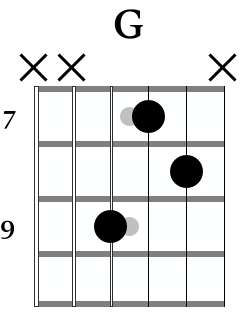
The Gsus4 Shape: Creating Your First Tension
Take your standard G major triad and move your ring finger up one fret:
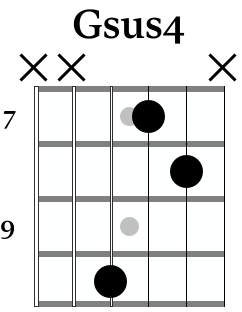
Congratulations – you’ve just played a Gsus4! This suspended fourth creates immediate tension that resolves beautifully back to G major.
Using this new sus chord shape will transform boring, static arpeggios into dynamic, engaging musical phrases. The tension and resolution keep listeners engaged and adds a bit of professional polish to your playing.
The Csus2 Shape: Another Essential Tool
Using the same shape we learned for Gsus4, we can apply it over a C major chord to create a Csus2 chord.
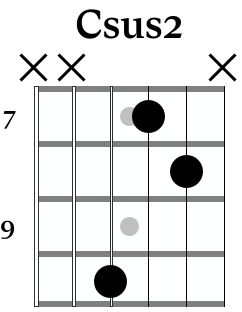
Notice the pattern? The same physical shape creates different suspended chords depending on what root note you’re playing over.
Here the root note of the triad is the 10th fret of the D string. In the previous chord (Gsus4), the triad was inverted, with the root note of G appearing on the 8th fret of the B string.
Gsus2: Completing the Triangle
Back to G major, there’s one more essential shape for us to look at: Gsus2.
Here we can start with another classic G major triad shape, like this:
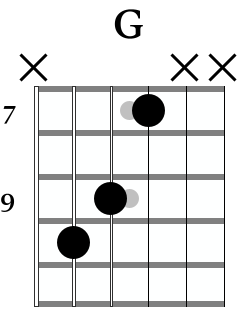
By making one simple change to that triad shape we can create a suspended 2 chord that brings a very different flavor into the mix.
Here’s the new chord shape:
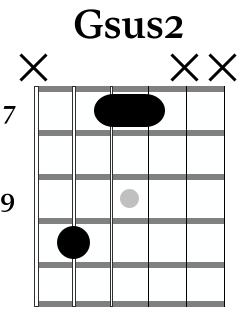
The beauty of having both Gsus4 and Gsus2 in your toolkit is that you can dance around the G major chord – creating constant movement and interest while staying firmly rooted in the home key.
The D Major Connection: Where It Gets Really Interesting
Here’s where things become fascinating: that same G major shape, when played over D major, becomes a Dsus4:
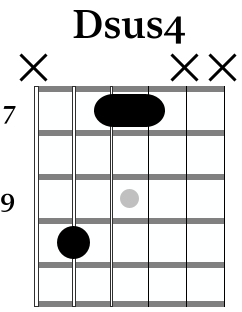
As before, the chord shape is exactly the same here – but the root of the chord is different. In the Gsus2 chord, the root appears on the 10th fret of the A string. In this Dsus4 chord it appears on the 7th fret of the G string.
You can then use all of the shapes we’ve explored so far to decorate and embellish that D major chord.
You’re not just playing a chord anymore; you’re telling a story within that chord.
Practice cycling through these different voicings over a single D major chord. Feel how each shape creates its own unique tension and color before resolving.
Voice Leading: Moving Between Chords Smoothly
Once you have these ideas under your fingers, you can stay in one position on the fretboard and use all the shapes you’ve learned to create smooth, professional-sounding transitions.
This is called voice leading, and it’s what separates amateur chord playing from pro-level rhythm guitar.
The key is efficiency: instead of jumping around the neck, you stay in position and let the sus chords (or any other chords that might appear in the progression!) do the work of creating movement and interest.
Adding Minor Chords to Your Palette
So far we’ve focused on major chords, but we can put some of these shapes to work over minor chords too, with beautiful results. Let’s explore E minor:

If you hold down the barre from the chord with your index finger, you can then apply all of the same sus shapes you learned with major chords, and they’ll sound amazing.
E minor suddenly becomes a playground for creating moody, sophisticated progressions with built-in tension and resolution.
Putting It All Together: A Complete Progression
Let’s apply all of these ideas to a common progression: G – D – Em – C
This four-chord progression is the backbone of countless songs. But instead of just strumming these chords, you can now:
- Use Gsus4 and Gsus2 shapes over G major
- Apply Dsus4 variations over D major
- Employ the barre technique with sus shapes over E minor
- Decorate C major with Csus2 and related voicings
The result? A simple progression transforms into a rich, storytelling musical journey—all while maintaining focus on rhythm guitar rather than lead playing.
From Rhythm Guitar to Mini Solos
While these techniques excel at elevating your rhythm playing, they naturally lead to melodic ideas and mini-solos. The shapes you’ve learned bridge the gap between pure chord accompaniment and melodic lead work.
Practice Tips for Mastery
- Learn the shapes in one position first – Get comfortable with how sus4 and sus2 chords feel under your fingers
- Move the shapes all over the fretboard – You can apply this idea to different voicings on different strings
- Practice over backing tracks – Apply these concepts to real musical contexts
- Focus on the resolution – The tension is only magical when it resolves properly
- Listen to the story – Don’t just play shapes; create musical narratives
Key Takeaways
- Suspended chords (sus2 and sus4) create tension that can transform the sound of a simple chord progression
- The same physical shapes work anywhere on the fretboard – learn them once, use them everywhere
- Voice leading lets you create sophisticated progressions while staying in position
- The goal is to tell a story with each chord, not just play it statically
Next Steps in Your Guitar Journey
Mastering suspended chords opens up a new dimension in your playing. You’re no longer limited to basic strumming patterns – you can create movement, tension, and resolution that captivates listeners.
The world of guitar is full of these elegant patterns waiting to be discovered. Sus chords are just the beginning—but what a powerful beginning they are.



